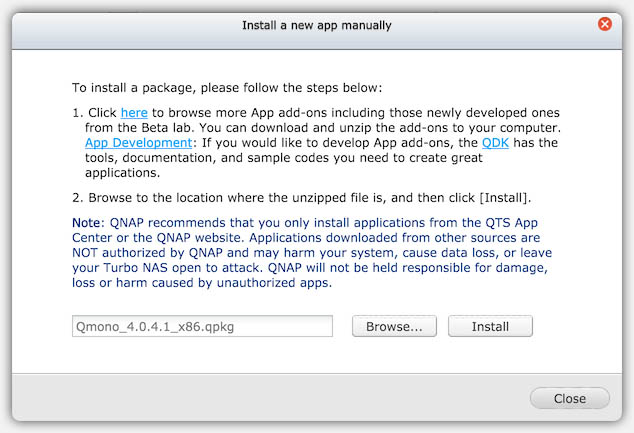
- #Install sonarr raspberry pi how to#
- #Install sonarr raspberry pi download#
- #Install sonarr raspberry pi mac#
#Install sonarr raspberry pi how to#
There is a lot of pertinent information about docker that won't (and can't) be covered in this guide, but check out the official docker documentation for more information and of course check out the Docker interest on howchoo.Previously we saw how to build the hardware for the scanning range finder and make an I☬ device of it. Of course, for your purpose you'll be creating at least one other service. This will show you a nice visualization of the swarm and which containers are running on which nodes. Once it's ready, you can visit (the IP of docker1 and port 8080). lqejzqrv0le8 viz replicated 0/1 alexellis2/visualizer-arm:latest Until the service is ready, you'll see the REPLICAS value as 0/1. We can check the status by typing: sudo docker service ls

#Install sonarr raspberry pi download#
This will probably take a few minutes to spin up because it has to download the image. mount type=bind,src=/var/run/docker.sock,dst=/var/run/docker.sock \ So let's log on to docker1 and create our visualizer service: ssh docker service create \ But we'll have to use a version of this image that was built to work on the Raspberry Pi and other ARM devices. This service is built from an image called "visualizer" originally created by Github user ManoMarks. To begin, we can run a visualizer service that will provide a web interface to visualize how the containers are distributed across the swarm. Our swarm can run any number of services and they can be scaled and distributed across the nodes in our cluster according to our preferences. Tunc46ypfdl9uhvin4g4ofddz docker2 Ready Active LeaderĪt this point we've accomplished the purpose of the guide, but we might as well run a service to demonstrate how to use the swarm. Q0p4wnzs9wg58yj8m10fk41t3 * docker1 Ready Active Reachable Nck7h1z5ka7q5x05ek73iw3p2 docker3 Ready Active ssh docker node lsĪnd you should see all of the nodes listed: 7x52m1rsps550g89n1zngqqw2 docker4 Ready Active Let's run our node ls command again to confirm. Now all of our nodes have joined the swarm. We just joined docker2 to the swarm as a manager, so now we'll use the other token and join docker3 and docker4 as workers. Keep in mind that the two swarm join commands look similar, so we'll have to keep track of which is which. So we'll grab this command, ssh into docker2 (from our local machine), and use the manager join command. This will generate another join command like the one from the previous step. While still logged into docker1, type: sudo docker swarm join-token manager

To do this, we'll have to generate a manager token. Let's start by adding our next manager node on docker2. As I mentioned in the previous step, we're going to add one more manager and two more workers. Now we've got to add the rest of the nodes to the swarm. So the IP addresses for all four of my Raspberry Pi's are:
#Install sonarr raspberry pi mac#
MAC Address: B8:27:EB:B6:4A:6E (Raspberry Pi Foundation) MAC Address: B8:27:EB:6E:DE:EF (Raspberry Pi Foundation) MAC Address: B8:27:EB:95:6D:7A (Raspberry Pi Foundation) MAC Address: B8:27:EB:79:49:F2 (Raspberry Pi Foundation) Here is my output: Starting Nmap 7.40 ( ) at 15:52 PDT When you spot them, take note of the IP address for each. This will list all of the devices connected to the network, so we should see all four of our Raspberry Pi's. Follow the guide for more information on finding the correct subnet.


Note: You might need to use a different subnet range. How to Find Your Raspberry Pi's IP Address sudo nmap -sn 192.168.1.0/24


 0 kommentar(er)
0 kommentar(er)
